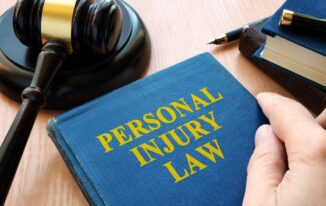
A personal injury case’s liability determination is an essential stage in claiming compensation for damages. Liability is the legal responsibility of the at-fault party in an accident, and it is frequently a key problem in personal injury cases. Determining liability depends on the particulars of the case. However, it can be difficult to establish negligence and who is responsible for your harm. If you are seeking compensation after severe injuries, you need to hire an attorney to prove negligence. A personal injury attorney will conduct a comprehensive investigation to gather evidence and, if required, will hire an expert to reconstruct the accident to determine who is responsible for what happened.
Following are some of the ways or criteria to establish liability in a personal injury lawsuit:
Duty of Care
Whether the defendant owed the plaintiff a duty of care is the first consideration in determining liability. Duty of care is a legal obligation to behave reasonably cautiously to prevent harm to other people. Different scenarios have varying duties of care. For instance, in car accidents, it must be proved that the guilty party was driving in an unsafe manner or the vehicle was not maintained properly, resulting in an accident. Similarly, in slip and fall accidents, the property owner will be scrutinized over the safety of the premises.
Breach of Duty
The defendant breached their obligation to protect you by willfully or negligently failing to do so. For instance, driving a vehicle under the influence of alcohol or a property owner forgetting to install proper signage to warn the public. Suppose the defendant neglects to act with reasonable care and injures the complainant due to a breach occurrence.
Causation
The third element to consider when deciding liability is causation. Causation means whether the defendant’s negligence resulted in the plaintiff’s losses. In other words, would the plaintiff have suffered from harm if the defendant had not disregarded their obligation of care.
Damages
Damages or harm the plaintiff has endured due to the defendant’s breach of obligation is the last consideration. Medical costs, lost wages, pain, suffering, and property loss are examples of damages. The plaintiff must demonstrate that they were harmed directly as a result of the defendant’s activities to be awarded damages.
Other Methods
Injury claims do not always entail negligence. A plaintiff may still demonstrate fault through several methods, such as by demonstrating “negligence per se,” proving deliberate behavior, or demonstrating that strict liability should apply to the case. According to “strict liability,” the injured party may seek damages without proving the defendant’s negligence. Strict liability claims are most frequently associated with product liability cases. Still, this notion of fault is also applicable to incidents involving the ownership of wild animals and exceptionally risky activities.
Liability can be proven once these factors have been established. In a personal injury lawsuit, one or more parties may be held accountable. Liability may occasionally be distributed among several individuals. When both the plaintiff and defendant are determined to have contributed to the mishap, this is referred to as comparative or contributory negligence. One or more parties may be held accountable, and liability may be disputed in court. It is crucial to seek the counsel of an accomplished personal injury lawyer if you have been hurt in an accident to guide you through the legal system and guarantee that your rights are upheld.



